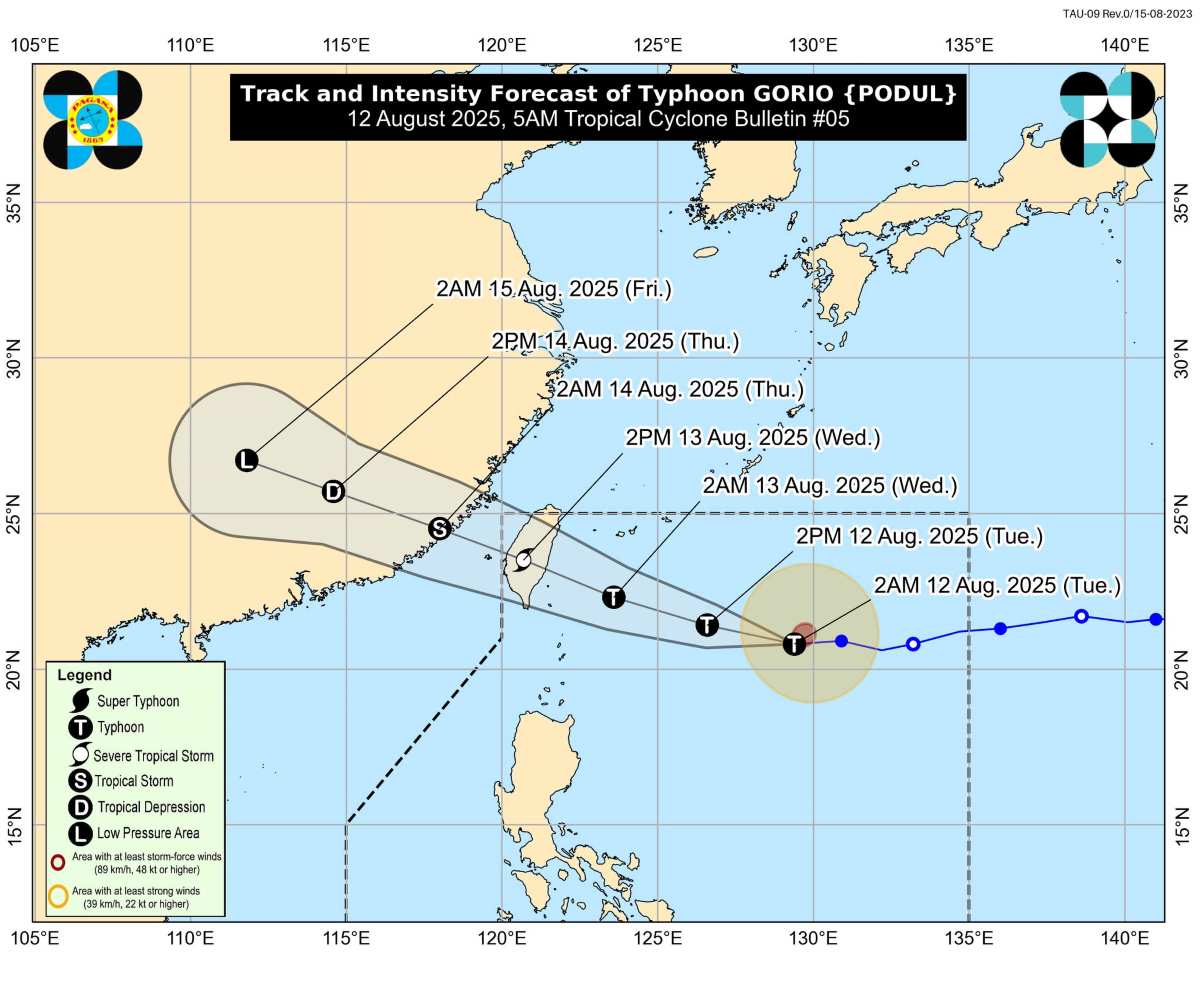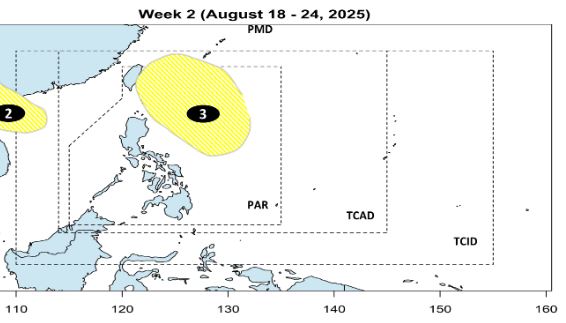In the storm forecast bulletin at 5:00 a.m. on August 12, the Philippine Atmospheric, Geophysical and Astronomical Services Administration (PAGASA) said that Typhoon Podul (local name: Typhoon Gorio) had the strongest winds of 120 km/h (level 12, gusts of wind have now increased to 150 km/h (level 13,).
The center of the storm is located at about 20.7 degrees north latitude, 129.0 degrees east longitude, 745km east of Itbayat, Batanes.
The storm is moving west at a speed of 25 km/h, still heading towards Taiwan (China), where the storm could make landfall on August 13.

PAGASA said Typhoon Podul is unlikely to directly affect the weather in the Philippines in the next 3 days. However, if the storm's path moves south, strong winds could sweep the northernmost part of Luzon and tropical cyclone signals are needed.
The meteorological agency also warned people that sea conditions in some areas of Northern Luzon could be dangerous on August 12 due to the storm.
The northern and eastern coasts of the Babuyan Islands will have waves up to 3.5m high. Small vessels should take preventive measures or avoid going to sea if possible.
The remaining seas of the Babuyan Islands; the northeastern coast of mainland Cagayan has waves up to 2.5m high.
The remaining seas of mainland Cagayan; Isabela coast; Aurora's northeastern coast, waves up to 2m high.
Typhoon Podul may leave the Philippine Forecast Area (PAR) by the evening of August 13.
This is the 7th typhoon in the Philippines in 2025, and the 2nd typhoon in August, after Typhoon Fabian.
PAGASA previously estimated that two or three tropical storms may form in or enter the PAR in August.
In addition to Typhoon Gorio (Podul), there is a possibility of two low pressure forming in the PAR this week, but the probability of them developing into storms is low.

Low pressure 1 may form in the Philippine Sea and move northeast of Luzon Island.
Low pressure 2 may appear in the East Sea, then move out of the PAR.
During the week of August 18-24, the low pressure in the East Sea is likely to head towards Hainan Island (China) and Northern Vietnam, but the possibility of strengthening into a storm is still low.

The third depression may form west of the PAGASA monitoring area (PMD), but there is also a low probability of becoming a storm.
With the above developments, the storm risk warning level during the entire forecast period has been raised, so PAGASA recommends that coastal and at sea areas should closely monitor the next weather forecasts.











